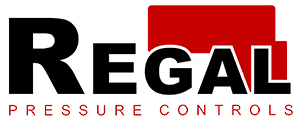Water pressure switches are crucial components in various water systems, playing a vital role in ensuring the proper functioning and protection of equipment. From residential water supply systems to industrial setups, these devices are instrumental in monitoring and controlling water pressure levels. In this comprehensive guide, we’ll delve into the workings, applications, types, selection criteria, installation, and maintenance of water pressure switches.
Table of Contents
ToggleUnderstanding Water Pressure Switches
How Water Pressure Switches Work
At the core of a water pressure switch is a mechanism that senses changes in water pressure and triggers electrical contacts accordingly. This mechanism typically involves a diaphragm or piston that reacts to pressure variations. When the pressure reaches a predetermined threshold, the switch activates, either closing or opening electrical contacts.
Here’s a simplified breakdown of the process:
- Pressure Sensing: The diaphragm or piston in the pressure switch responds to changes in water pressure. As pressure increases or decreases, it moves accordingly.
- Contact Activation: When the pressure reaches a certain level, the switch triggers electrical contacts to either close or open.
- Control Function: Depending on the setup, the switch controls the operation of other components in the system, such as pumps or valves. For instance, it may signal a pump to start or stop based on pressure fluctuations.
- Adjustability: Many water pressure switches are adjustable, allowing users to set the pressure thresholds at which they activate or deactivate. This flexibility enables customization to suit specific system requirements.
Applications of Water Pressure Switches
Water pressure switches find applications in various water supply systems, including:
- Residential Water Systems: They regulate water pressure in homes, ensuring consistent flow and protecting plumbing fixtures.
- Well Pump Systems: Water pressure switches are crucial in well systems, where they control the operation of pumps to maintain adequate water pressure.
- Irrigation Systems: They play a role in agricultural irrigation setups, managing water flow to crops based on pressure levels.
- Industrial Processes: In industrial settings, water pressure switches are used in machinery and equipment to monitor and regulate water pressure for optimal performance.
- Fire Suppression Systems: They are integrated into fire sprinkler systems to ensure water pressure is maintained for effective fire suppression.
Types of Water Pressure Switches
Water pressure switches come in various types, each suited to specific applications and pressure ranges. The two primary types are:
- Diaphragm-Type Pressure Switches: These switches use a flexible diaphragm to sense pressure changes. They are suitable for a wide range of pressures and are commonly used in residential and light commercial applications.
- Piston-Type Pressure Switches: Piston-type switches utilize a piston mechanism to detect pressure variations. They are often employed in applications requiring higher pressure ranges, such as industrial processes and heavy-duty pumps.
Factors to Consider When Selecting a Water Pressure Switch
Choosing the right water pressure switch involves considering several key factors:
- Pressure Range: Ensure the switch’s pressure rating matches the requirements of your water system. It should be capable of handling the minimum and maximum pressure levels expected in the system.
- Adjustability: Opt for a switch that offers adjustable pressure settings if flexibility is needed to fine-tune pressure thresholds.
- Contact Rating: Check the electrical contact rating to ensure compatibility with the load requirements of connected equipment, such as pumps or control panels.
- Environmental Conditions: Consider factors such as temperature, humidity, and exposure to chemicals or corrosive substances, and choose a switch with suitable environmental protection ratings.
- Reliability and Durability: Select a switch from a reputable manufacturer known for producing reliable and durable products. Look for features such as robust construction and resistance to wear and tear.
- Ease of Installation: Choose a switch that is easy to install and compatible with your existing plumbing and electrical setup. Consider factors such as mounting options and connection types.
Installation and Maintenance Tips
Proper installation and maintenance are essential for ensuring the optimal performance and longevity of water pressure switches. Here are some tips:
- Follow Manufacturer Guidelines: Adhere to the manufacturer’s instructions for installation, wiring, and adjustment. Improper installation can lead to malfunctioning or premature failure of the switch.
- Positioning: Install the pressure switch in a location where it can accurately sense water pressure fluctuations without being exposed to excessive moisture, heat, or mechanical stress.
- Calibration: Calibrate the pressure switch according to the desired pressure settings using a pressure gauge and adjusting the setpoint screws as needed.
- Regular Inspection: Periodically inspect the switch for signs of wear, corrosion, or damage. Replace any worn components or damaged seals promptly to prevent leaks or malfunctions.
- Testing: Test the switch’s operation periodically by simulating pressure changes or using a pressure gauge to verify that it activates at the correct pressure thresholds.
- Cleaning: Keep the switch and surrounding area clean to prevent debris buildup, which can affect its performance. Use compressed air or a soft brush to remove dust or dirt accumulation.
- Maintenance Schedule: Establish a regular maintenance schedule for checking and servicing water pressure switches, especially in critical applications where uninterrupted operation is essential.
Conclusion
Water pressure switches are integral components in water supply systems, serving to monitor, control, and protect against pressure fluctuations. Understanding their operation, types, selection criteria, installation procedures, and maintenance requirements is essential for ensuring efficient and reliable performance. By choosing the right pressure switch and following best practices for installation and maintenance, you can optimize the functionality of your water system and prolong the lifespan of associated equipment.
